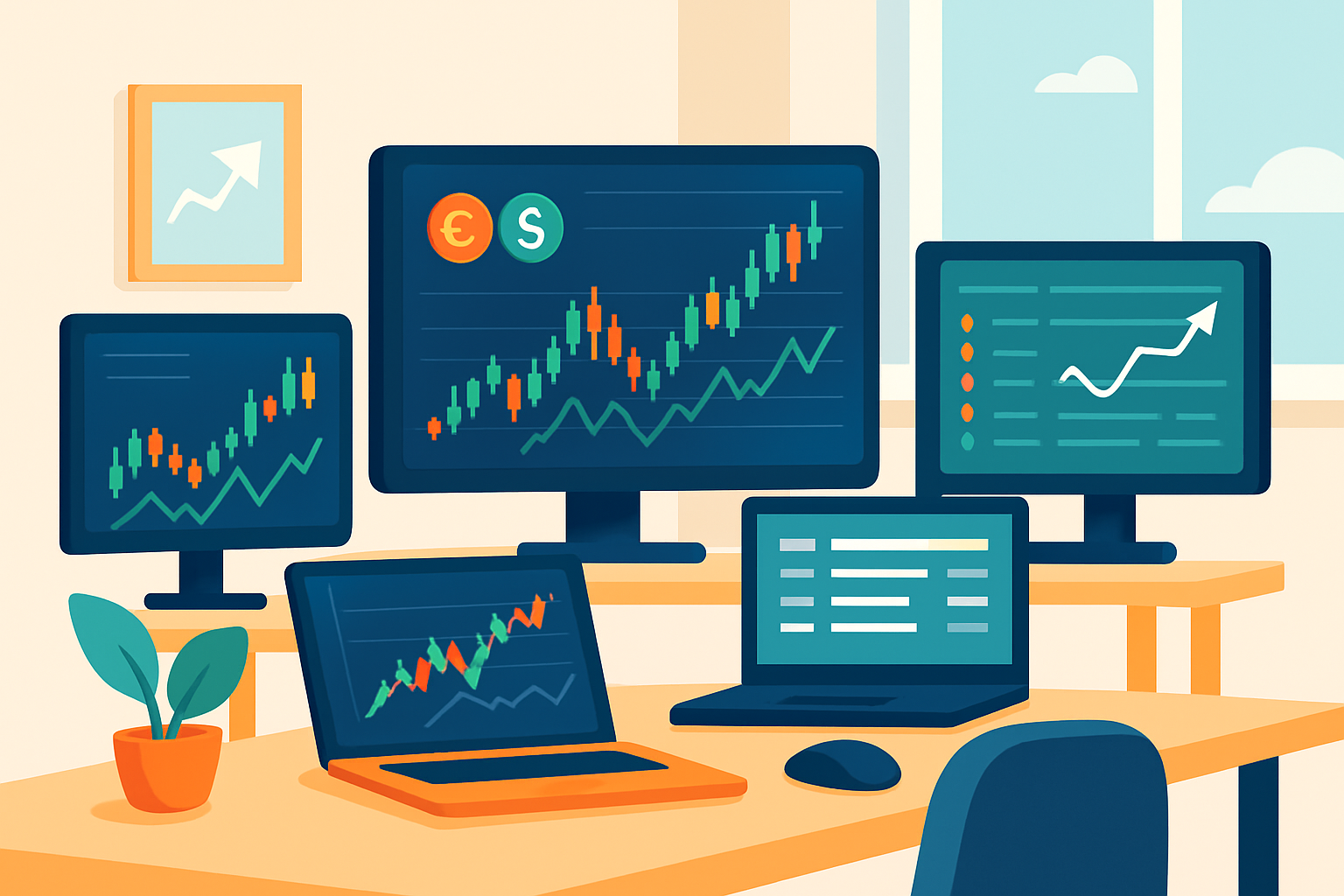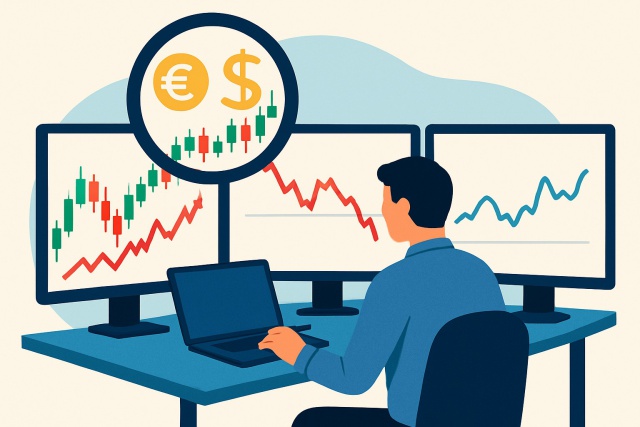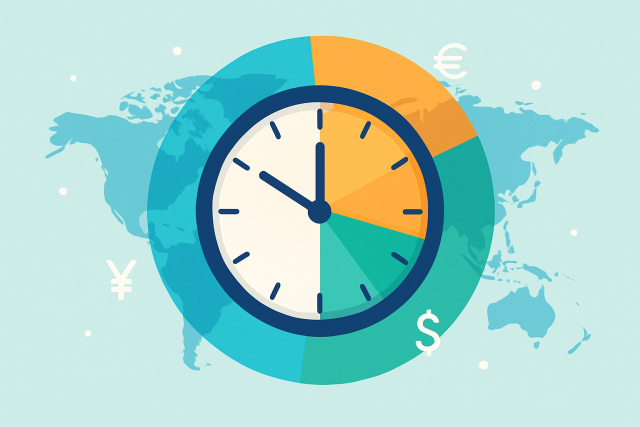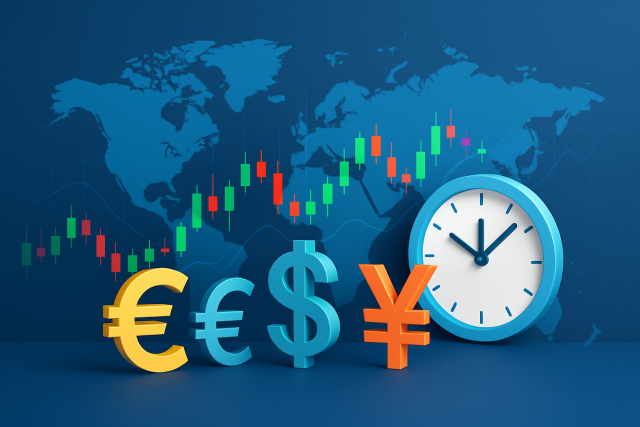
TrendSpider Forex vs Traditional Platforms
Discover how TrendSpider Forex revolutionizes currency trading through AI and automation compared to...

Trading forex for beginners can seem like a beast to tackle at first but once you wrap your head around the basics it gets a whole lot friendlier and easier to manage. Getting cozy with the fundamentals doesn’t just pump up your confidence—it also saves you from those rookie slip-ups that tend to trip people up when they’re just starting out in this fast-moving global playground.
Forex trading, often called foreign exchange trading, is about buying and selling currencies from around the world. It happens in a decentralized global market where currencies come in pairs and exchange rates are always on the move.
| Term | Definition | Example |
|---|---|---|
| Currency Pair | Two currencies that are traded head-to-head in the market | EUR/USD (Euro against US Dollar) |
| Base Currency | The first currency you see in the pair, kind of like the lead actor | EUR in EUR/USD |
| Quote Currency | The second currency in the pair, showing what the base is worth | USD in EUR/USD |
| Pip | The tiniest move in price you’ll spot in a currency pair, usually tiny but mighty | A 0.0001 change in the EUR/USD price |
| Spread | The little gap between the price you can buy and sell — it’s where brokers make their cut | 1.1200 (bid) compared to 1.1202 (ask) |
| Leverage | Borrowing some extra funds to punch above your weight in a trade | 10:1 leverage means controlling $10,000 with $1,000 |
| Margin | The cash you need upfront to open a leveraged trade — think of it as a security deposit | $100 margin required to open a $1,000 trade |
| Bid Price | The price you’d get if you were selling right now | EUR/USD bid is 1.1200 |
| Ask Price | The price you’d pay if you’re buying at this very moment | EUR/USD ask is 1.1202 |
When you are ready to dive into a forex trade you turn to a trading platform. This handy software provided by brokers lets you buy and sell currencies with just a few clicks. The market doesn’t sleep—it stays open 24 hours a day on weekdays because of overlapping sessions in London, New York, Tokyo and Sydney.
Choosing the right forex broker really matters, as it can shape both your trading experience and your financial peace of mind. Beginners often find that brokers offering demo accounts are a godsend because they let you dip your toes in with virtual money, all while the market ticks along for real. This no-risk playground is perfect for getting comfy with the platform and testing out strategies before you put your own skin in the game.
Start by picking the currency pair that catches your eye or fits your analysis. Trading what you understand feels much better.
Dive into the market with some simple tools like price charts and the latest news. There’s no need to complicate things right away.
If you’re feeling bullish, go ahead and buy. If things look shaky, sell to take advantage of that dip.
Figure out your trade size, usually counted in lots. It’s smarter to start small, like dipping your toes in instead of jumping in headfirst.
Don’t forget to set a stop-loss to keep losses in check and a take-profit to lock in your wins. Safety nets are your friend.
When you’re ready, place your trade by hitting the buy or sell button on your platform.
Keep a close watch on your trade and be ready to adjust your stop-loss or close out when you reach your goals or if the market surprises you.
Managing risk is a vital part of forex trading, something I’ve found separates the pros from the amateurs. Stop-loss orders act like your safety net when the market decides to throw you a curveball, helping you keep those losses from spiraling out of control and protecting your precious trading capital. It is key to never risk more than you are comfortable losing—nobody wants sleepless nights over a trade gone sideways. Starting with smaller trades usually makes a lot of sense, at least until you get the hang of it.
Each of these strategies really underscores the value of keeping things simple and staying patient—qualities every beginner would do well to nurture.
Mistakes in trading are pretty much par for the course, but oddly enough, they often turn out to be the best teachers. With a bit of grit and a commitment to keep learning, beginners can flip those losses into valuable lessons and steadily pave their way to lasting success.

A beginner-friendly forex trading setup showing multiple screens with currency charts and an economic calendar.
Building confidence in trading forex for beginners is more of a marathon than a sprint. It requires ongoing learning through books, videos and reliable courses. Jumping into forex communities and forums is like eavesdropping on seasoned traders swapping war stories and clever tips because you pick up nuggets that books don’t always cover. Keeping a trading journal to jot down your trades is a game changer. It nudges you toward thoughtful reflection and steady improvement.
Struggling to improve your trading performance? Edgewonk's advanced analytics tools are designed to give you the edge you need.
With detailed trade journaling, robust strategy analysis, and psychological insights, you'll gain a comprehensive understanding of your strengths and weaknesses. Don't miss out on this game-changing opportunity.
Traders, it's time to elevate your game. Edgewonk is the ultimate trading journal software designed to empower you with data-driven insights and personalized strategies. Take control of your trading journey and maximize your potential.
11 articles published
Driven by a passion for democratizing financial markets, he creates accessible trading education content that bridges the gap between complex strategies and retail investors.
Read Posts
Discover how TrendSpider Forex revolutionizes currency trading through AI and automation compared to...

Leverage in forex lets traders control bigger positions with less capital. Learn how it works, its r...

Unlock the secrets of forex time zones and trading sessions to enhance your global trading strategy....

New to forex? Discover essential insights, risks, and strategies in this beginner-friendly guide to...
